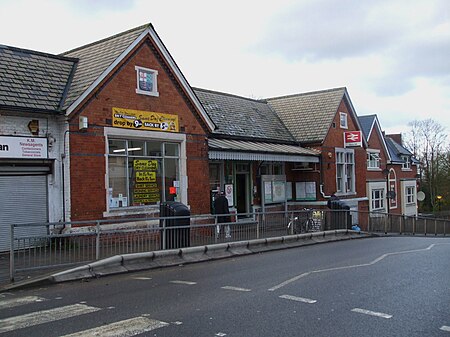Gipsy Hill railway station
DfT Category E stationsFormer London, Brighton and South Coast Railway stationsLondon stations without latest usage statistics 1415London stations without latest usage statistics 1516Rail transport stations in London fare zone 3 ... and 4 more
Railway stations in Great Britain opened in 1856Railway stations in the London Borough of LambethRailway stations served by SouthernUse British English from August 2012

Gipsy Hill railway station is in the London Borough of Lambeth in south London. It is situated on the Crystal Palace line, 7 miles 77 chains (12.8 km) measured from London Victoria. The station, and all trains serving it, are operated by Southern, and it is in Travelcard Zone 3. The station is located at grid reference TQ333712. Ticket barriers were installed in February 2009.
Excerpt from the Wikipedia article Gipsy Hill railway station (License: CC BY-SA 3.0, Authors, Images).Gipsy Hill railway station
Sainsbury Road, London West Norwood (London Borough of Lambeth)
Geographical coordinates (GPS) Address External links Nearby Places Show on map
Geographical coordinates (GPS)
| Latitude | Longitude |
|---|---|
| N 51.4246 ° | E -0.084 ° |
Address
Gipsy Hill
Sainsbury Road
SE19 1QL London, West Norwood (London Borough of Lambeth)
England, United Kingdom
Open on Google Maps









